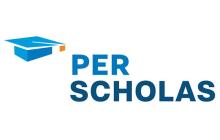Piloting Intelligent Tutoring Systems to Enhance Sectoral Training Programs: Early Findings and Lessons Learned

Workers are disconnecting from the labor force at high rates due, in part, to rapidly evolving skill requirements. Finding effective ways to help adult workers upskill and reskill to work in high-demand sectors is vital for economic prosperity.
Based on decades of research on expert human tutoring and artificial intelligence (AI) in computer-based training systems, AIR, Per Scholas, and University of Memphis are exploring intelligent tutoring systems (ITS), adaptive computer-based learning environments, as a mechanism for helping sectoral training programs improve outcomes for learners.
They’re not giving you the answer, they’re pointing you toward the answer. And that’s what the students truly need. They need to be focused on finding the answer themselves.
- Instructor
Our team developed and user-tested a proof-of-concept ITS for Per Scholas’ most popular entry-level course, IT Support, that prepares learners for the CompTIA A+ certification, the industry-standard certification for IT professionals. Acquiring this certification is an important step in gaining high-quality employment in the field of IT, which offers stable employment with livable wages. The resulting brief details key findings, lessons learned, next steps, and conclusions.
Key Findings
- Feedback from instructors and users indicates that these populations found the ITS to be of great value when interacting with the prototype we developed. They also identified specific features they found beneficial and areas for improvement.
- Per Scholas managers shared that ITS similar to the prototypes we developed would be useful for additional courses and would be feasible to scale up given their experiences with development.
- ITS development can be done efficiently in partnership with program subject matter experts, if you assemble the right team and develop clear goals and work plans.
- It is possible, even in a pilot, to create templates and workflows that can be adapted to future contexts and help reduce burden when scaling ITS.


